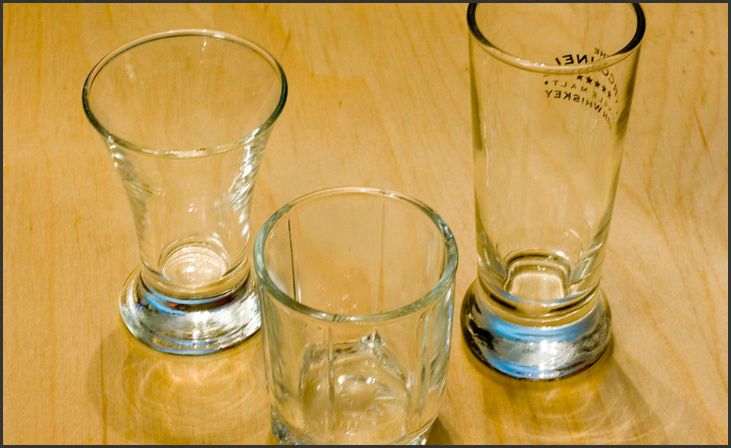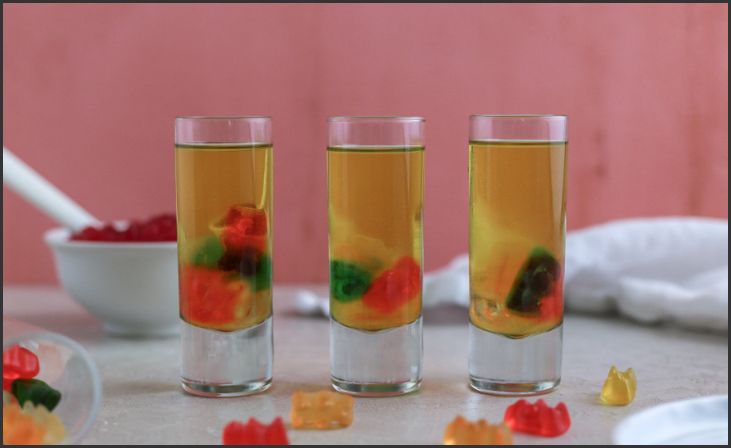Welcome to the fascinating realm of shot glasses, where the meticulous art of measurement can truly define or diminish your drinking experience. Have you ever found yourself pondering the enigma, “How Many ML Are In A Shot Glass?” Embark with us on an intriguing journey as we peel back the layers of this mystery, delving into the multifaceted world of shot glasses. Together, we’ll unravel the intricacies of their measurements and unveil the profound cultural influences that mold their distinctive designs.
In the universe of shot glasses, precision is not merely a technicality; it’s the essence of a perfect pour, a nuanced sip, and an unforgettable drinking encounter. As we embark on this exploration, we invite you to immerse yourself in the stories these small yet significant vessels tell – stories of tradition, innovation, and the ever-evolving tapestry of global libation culture.
What Defines A Shot Glass?
Before we immerse ourselves in the intricacies of measurements, let’s dissect the very nature of a shot glass. Essentially, it is a petite vessel meticulously crafted to cradle and quantify spirits or liquors. Within the realm of mixology, these diminutive glasses take on a multitude of forms, each bearing its own distinct shape and size, and serving a unique purpose in the intricate dance of flavors and concoctions.
Also Read:- How To Cook Grouper Fish
Picture a canvas of possibilities where these small but significant glasses become the storytellers of taste, narrating the nuanced tales of various libations. They are more than mere drinking vessels; they are the instruments through which mixologists orchestrate the symphony of flavors, creating sensory experiences that linger in the memory.
As we embark on this journey into the realm of shot glasses, envision them not just as containers for liquids but as vessels that encapsulate the very spirit of mixology. These glasses transcend their utilitarian function, becoming an integral part of the alchemy that transforms raw ingredients into delightful elixirs.
In various corners of the mixological landscape, shot glasses emerge in diverse shapes and sizes, each tailored to accentuate the unique characteristics of the libation it holds. Whether it’s the classic short glass, the tall and slender shooter, or an avant-garde design pushing the boundaries of tradition, each variant contributes to the symphony of flavors in its distinctive way.
How Many ML Are In A Shot Glass?
Shot glasses come in various sizes and are commonly used to measure and serve alcoholic beverages. The term “ML” refers to milliliters, which is a unit of volume used to quantify liquid capacity. The standard size for a shot glass is often considered to be 44 milliliters, but it’s important to note that shot glass sizes can vary. Here’s a more detailed explanation:
1. Standard Size:

The widely accepted standard for a shot is 44 milliliters (ml). This measurement is a common reference point used in many countries, with the United States typically adhering to this standard. The 44 ml size provides a consistent basis for serving shots, but it’s essential to recognize that variations exist due to regional differences influenced by local drinking traditions and regulations.
2. Variability:
Shot glasses exhibit a diverse range of shapes and sizes, spanning from 30 ml to 60 ml or even more. The choice of shot glass size can be influenced by individual preferences of establishments or local regulations governing alcohol service. It is imperative for accuracy to confirm the specific size of the shot glass being used, as this can significantly impact the actual volume of liquid being poured.
3. Regulations:
Legal regulations in various regions can dictate the standard size for a shot of alcohol. For instance, the United States sets the standard for a shot at 1.5 fluid ounces, which is approximately 44 ml. However, this standard may vary in other countries, highlighting the importance of being aware of and adhering to local regulations when determining shot sizes.
4. Pouring Standards:
Bartenders commonly rely on shot glasses as a standardized measure when pouring drinks. This practice is crucial for maintaining consistency in the amount of alcohol included in cocktails, ensuring that customers receive the expected and regulated quantity. Shot glasses serve as a practical tool in the hospitality industry for precision in mixology and responsible serving practices.
5. Collectible and Novelty Shot Glasses:

Beyond standard use, shot glasses come in a myriad of designs and materials, catering to collectors and enthusiasts. These collectible and novelty shot glasses often feature unique shapes, colors, and themes. Importantly, their capacities may differ from the standard 44 ml size, with some being smaller or larger. Collectors seek these variations for their aesthetic appeal and the stories they tell, adding an extra dimension to the world of shot glasses beyond their utilitarian purpose.
Types of Shots
Certainly! Here are descriptions of various types of shots, each with its own unique ingredients and characteristics:
Bartender’s Best:
A bartender’s choice, often a mix of different spirits and flavored liqueurs. It showcases the bartender’s creativity and expertise.
Tequila Sunrise:
A vibrant and visually appealing shot featuring tequila, orange juice, and grenadine. The layers mimic the colors of a sunrise.
Kamikaze:
A classic and potent shot made with equal parts vodka, triple sec, and lime juice. It delivers a strong, citrusy punch.
B-52:
A layered shot composed of coffee liqueur (usually Kahlúa), Irish cream (like Baileys), and Grand Marnier. Each layer is carefully poured for a visually striking effect.
Lemon Drop:
A sweet and sour shot made with vodka, lemon juice, and simple syrup. Often served with a sugar-coated lemon wedge.
Jägerbomb:
Combining Jägermeister and an energy drink (like Red Bull), this shot is known for its stimulating and energizing effects.
Buttery Nipple:
A creamy and smooth shot made with butterscotch schnapps and Irish cream. It’s rich and indulgent.
Fireball Cinnamon Whisky Shot:
Featuring the popular Fireball Cinnamon Whisky, this shot has a spicy kick that warms the palate.
Washington Apple:
Combining Crown Royal whiskey, sour apple schnapps, and cranberry juice, this shot offers a sweet and tart flavor profile.
Slippery Nipple:
A layered shot containing Bailey’s Irish Cream and Sambuca. It’s known for its silky texture and sweet taste.
Gummy Bear Shot:

A playful shot made with fruit-flavored vodka and raspberry liqueur, creating a sweet and fruity combination.
Pickleback:
A unique shot combination of whiskey followed by a shot of pickle juice. The briny pickle juice serves as a palate cleanser after the strong taste of whiskey.
Also Read:- Mediterranean Diet Lunches
Red Headed Slut:
A vibrant shot made with peach schnapps, cranberry juice, and Jägermeister. It’s sweet, fruity, and visually appealing.
Chocolate Cake Shot:
A dessert-inspired shot featuring vanilla vodka and Frangelico hazelnut liqueur. To mimic the flavor of chocolate cake, it frequently comes with a sugar-coated lemon wedge.
Conclusion
In the culmination of our exploration into the world of shot glasses, we find ourselves standing at the crossroads of tradition, innovation, and a profound appreciation for the art of libation. The journey to answer the query, “How Many ML Are In A Shot Glass?” has unfolded a narrative that extends far beyond mere measurements.
From understanding the core essence of shot glasses as vessels of mixological mastery to unraveling the historical tapestry that weaves these small wonders into the fabric of human celebration, our quest has been nothing short of enlightening. The intricate dance of precision in pouring shots, the diverse cultural influences shaping their design, and the evolution of shot glasses from tradition to avant-garde innovation—each facet tells a unique story.
FAQs
The standard measurement for a shot is often influenced by cultural and legal factors. In many places, it’s around 44 milliliters, but this can vary.
While shot glasses are designed for a specific purpose, there’s no strict rule against using other glasses. However, using a shot glass ensures consistent measurements.

Leave a Reply